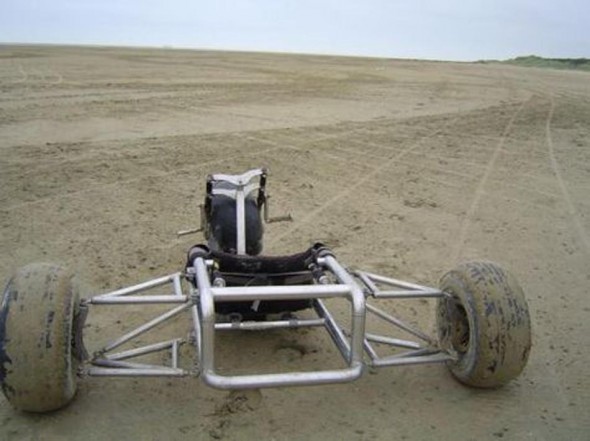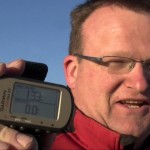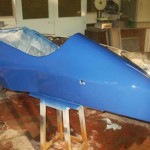Construction and equipment
Of course, we must not forget that our sport we have to deal with lateral forces. Stay on course for a big speed is very important and you’re just back some weight is needed (we have no sword or keel), but the “universal hard race buggy with Bigfoot”, as in the Netherlands we usually use is far under all circumstances the most efficient enough aerobic speed.
The price fixed buggy, the weight (60 pounds) is compared with the Most racing buggies not too bad (designed and built by Harry Taskin). There will be an optimum ratio thought to be among the best resistance to lateral forces and rolling resistance that will bring. Anyway, a heavy buggy on a soft sea mullet, the speed in my opinion, because of an increase in (role-) resistance, not necessarily for the better.
Try axle of the buggy as low as possible and get the buggy driver as low as possible in his buggy. Besides stability is an advantage that allows the point where the kite on its power to bring the buggy falls. This is beneficial because the lower the kite in the wind window, the more force it can deliver.
To a low weight that must be buggy in the future perhaps used to be a carbon frame and / or a monocoque construction instead of a stainless steel frame. Rather than a heavy steel frame, this monocoque construction itself bear the weight of the buggy. A carbon-monocoque is also particularly strong except light and aerodynamic sound are carried out. Who knows? Such development will complete the configuration and geometry of a buggy again on its head, for how we keep such a lightweight on track?



